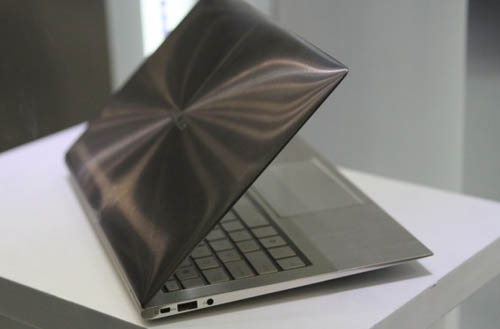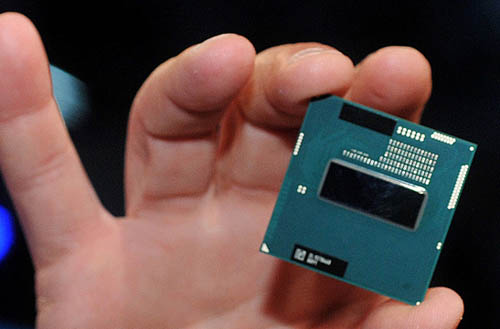AMD's Ultrathin laptop has certain risks
This manufacturer will have to spend big money on production as well as marketing for their products.

AMD's price of Ultrathin has always been a concern. Photo: Engadget.
Last week, AMD organized an event for financial analysts at its headquarters. While talking about product strategies, AMD mentioned the 18mm thin Trinity laptop that they consider a solution for ultra-thin laptops.
AMD Trinity competes directly with Ultrabook running Ivy Bridge processors with Intel's new Intel HD 4000 graphics system. Despite the warm welcome from OEM and ODM manufacturers, Trinity still has certain risks.
Here are the predictions for Forbes.
Software has a heterogeneous computing structure.
AMD offers detailed plans for developing software based on Fusion platforms. The company wants to create a new ecosystem based on OpenCL platform to take advantage of parallel processing units available on its APU. They hope to have enough OpenCL applications to deal with Intel's Ivy Brige. Therefore, AMD must create applications or products that have unique new features that are suitable for the consumer market. However, this takes a lot of time and money. This is a challenge for many companies, not just AMD. If it is not possible to create the right type of application properly, its products will be set at a lower price than Intel.

Intel invested heavily in promoting Ultrabooks. Photo: Pcper.
Thin and light design is also a risk.
In the first introduction of Ultrabook, Intel established a $ 300 million fund to invest in the areas of design, technology and marketing for this product. The above investment fund aims to promote innovation, including slim, light design and cooling solutions. This will help Intel Core microprocessors work in products with the same design while still creating high performance. AMD also has to do the same thing to compete in ultra-thin laptops. However, if the ultra-thin laptop designs with Intel's current cooling system are owned by Intel, AMD has to develop its own design.
Marketing expense.
Both Intel and AMD have established marketing funds for ODM, OEM and retail channels. These funds pay for many items such as advertising, shelf display and other surcharges. Until now, Intel has always been regarded as generous by advertising directly to increase consumer awareness of the Ultrabook line. Will AMD dare to act as a rival, because it wants to reduce the cost of sales, management and general problems and increase profits. This company only wants to invest and R&D field (research and development). In some ways, Intel investments help create the market for AMD. But if the world's largest chip maker only wants to direct consumer awareness of ultra-thin models of Ultrabooks, this is a big problem for Advanced Micro Devices.
Will AMD be willing to pay for marketing to Ultrathin or put it at a low price to compete with Ultrabook?

Ultrabook uses Ivy Bridge chip as a direct rival of Trinity. Photo: Ivybridgelaptops.
Intel DX-11 graphics are also challenges that AMD faces.
Manufacturers such as AMD or Nvidia have long been ahead of Intel in terms of graphics compatibility and performance, especially in the gaming segment. However, DX-11 graphics on the Intel HD 4000 by the largest chip maker Microsoft rated as close to AMD's Trinity. This will reduce AMD's advantage over Intel.
Security.
Two new Intel security features including Anti-Theft and Identity Protection help protect your data. An expensive feature of Intel Identity Protection is to make trading on websites quick and safe. These potentials can help Intel's Ultrabook gain market share. If this happens, AMD must also prepare similar products to compete.
Selling prices are always a matter of concern.
Previously, AMD once claimed that Ultrathin laptops will start at $ 599. This is much lower than the average price of an Ultrabook running Intel Core i5 today ($ 899). According to AMD CEO, the two most expensive parts on laptops today are CPU and operating system (Windows 7). Therefore, AMD cannot give up any part to reduce the price. This means that the profits of ODM and OEM manufacturers will be affected. Even if you get a cheaper price than Intel's Ultrabook, AMD's Trinity still won't make much of an advantage. In particular, if the " cheap " label is attached, the product will be difficult to raise money on the market.
You should read it
- AMD provides ultrathin standards that compete with Intel's ultrabook
- Acer blamed Dell and HP 'sabotaging' ultra-thin laptops
- Apple equipped with Sandy Bridge processor for MacBook?
- HP introduces laptops with ultrathin Omen games
- Predator Triton 500 - the most sought after gaming laptop in 2020
- Samsung came out with the 'soft' 5 series laptop
 Toshiba comes to the new Satellite line for $ 1,600
Toshiba comes to the new Satellite line for $ 1,600 Aspire Timeline Ultra laptop line from Acer
Aspire Timeline Ultra laptop line from Acer Will the MacBook Pro have a Retina-style resolution screen?
Will the MacBook Pro have a Retina-style resolution screen? Toshiba Portégé R830 adds red and Core i7 chips
Toshiba Portégé R830 adds red and Core i7 chips Dell 'wiped out' Inspiron Mini Netbook
Dell 'wiped out' Inspiron Mini Netbook Toshiba introduces a line of 'super products' for entrepreneurs
Toshiba introduces a line of 'super products' for entrepreneurs